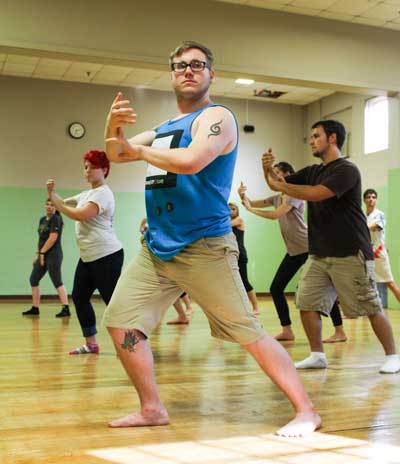Story by Elizabeth Hernandez, Contributing writer

Classes are open to any student looking for exercise and willing to learn.
Story by Elizabeth Hernandez, Contributing writer

Tai Chi classes have now started back up on the second floor dance studio in the Carr Health Building.
The class is scheduled to meet 2:30- 4:30 p.m. Thursdays with instructor Kathryn Mowery.
Tai Chi involves learning a series of slow, meditative body movements that were originally meant to be taught as a martial art with long duration exercise. When health benefits were discovered in the early twentieth century, Tai Chi was looked at in a new light as a medicine or a wellness exercise.
“I think of Tai Chi as the mother of all modern arts,” Mowery said. She said she has been teaching this particular course since 2001.
“[Students] often say it helps with stress relief, they get stronger legs and it helps with concentration … In general, it is very healthy.” Mowery said.
According to Mayo Clinic, the art of learning Tai Chi has many benefits.
Martial artists can even rent or buy his or her own Tai Chi self-learning videos, but to truly gain the full benefits and proper techniques it is always best to learn from an instructor.
If Tai Chi is learned correctly it can decrease stress, anxiety and depression, as well as improve flexibility, balance and agility.
In addition, Tai Chi can help increase energy, stamina and enhance the immune system, along with helping to lower blood pressure.
THE YANG STYLE:
Twenty-four movements in the simplest form, very demanding because they must keep their stance wide and the knees bent for most of the time.
THE WU STYLE:
Twenty-four to thirty-six movements in a shorter form, it’s said that wu is gentler than the yang style because it uses a narrower, but higher stance where the knees are not as bent.
THE TAI CHI STYLE:
Only twenty movements. It uses a higher stance, but with less transfer of weight from one leg to the other, than the yang and wu style do.